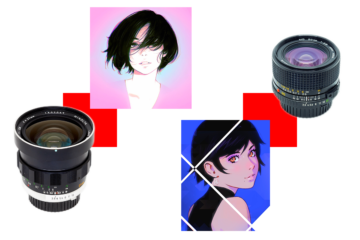Minolta MC Rokkor HH 35mm 1:1.8 W – MC II – review

Minolta MC Rokkor HH 35mm 1:1.8 W vintage manual lens review (Minolta MC W Rokkor-HH 1:1.8 f=35mm)
- Official classification: MC
- Collector’s classification: MC II, Hills &Valleys, Knurled
One another legend by Minolta – the wide-angle 35mm lens powered with F1.8. The lens is very popular among photographers and should stay in the one row with old-school gems like MC PG 58/1.2 or 85/1.7.
Minolta MC Rokkor HH 35mm 1:1.8 specifications
| minolta.eazypix.de index | 64 |
| Name engraved on lens | MC W.ROKKOR-HH |
| f[mm] | 35 |
| A max [1/f] | 1.8 |
| A min[1/f] | 16 |
| Lens design [el.] | 8 |
| Lens design [gr.] | 6 |
| Filter thread Ø front(rear)[mm] | 55 |
| Lens Shade | screw-in |
| closefocus[m/ft] | 0.3/1 |
| Dimension Ø x length [mm] | 66×68 |
| Weight[g] | 420 |
| Year | 1970 |
| Style | MC II |
| Code No. (ROKKOR-X) or Order No. | 605-018 |
| Notes |
More data
| Floating elements | NO |
| Aperture blades number | 8 |
| Confidence in the test results of reviewed copies | Enough High |
| Reviewed Lens SN: | 1513420 |
Historical note
Minolta has developed and produced 5 lenses with these characteristics – 35mm F1.8. The first one was in MC I design in 1968 (MC “flat-grip”), later was this currently reviewed MC II (“Hills&Valleys”), later rubberized MC X, MD II, and MD III (MD I design was skipped).
Traditionally, I have to say: MC age was a period of improvements and experiments, and the IQ of lenses may be different not only between generations but even inside one line of production.
Minolta MC Rokkor HH 35mm 1:1.8 lens exterior
Minolta MC Rokkor HH 35mm 1:1.8 lens shade
Minolta MC Rokkor HH 35mm 1:1.8 mounted on Minolta SR-T 101 camera
Minolta MC Rokkor HH 35mm 1:1.8 sharpness
Сlose-distance resolution test, minimal distance
Testing methods description
- Target: 10-15 cm picture, printed on glossy photo paper
- Distance: 1.7m
- Camera: Sony A7II (24mpx, full-frame, tripod, remote control). M-mode, ISO fixed, WB fixed, SteadyShot – OFF.
- The test was repeated for every F-stop on every focus position with manual focus adjustment for each shot. That is to avoid the effect of field curvature.
- RAW processing: Capture One, default settings. All quality settings – 100%. Crops – 300×200 px
Original target image (printed in horizontal orientation on 10cm X 15cm glossy photo paper)
Scene preview
Test results

Long-distance resolution test
Testing methods description
- Target: cityscape
- Distance: > 200 meters to center focus point
- Camera: Sony A7II (24mpx, full-frame, tripod, remote control). M-mode, ISO fixed, WB fixed, SteadyShot – OFF. The focus point is on the center only.
- RAW processing: Capture One, default settings. All quality settings – 100%. Crops – 300×200 px
Scene preview
Test results
Minolta MC Rokkor HH 35mm 1:1.8 aberrations
Vignetting
Geometric distortion
Coma aberrations
Chromatic aberrations
Long-distance bokeh
Test#1
Test conditions: the lens was focused on 0.45m, buildings are on “infinity”-distance
Test#2
Test conditions: lens was focused on 2m
Light bubbles bokeh – infinity
Test #1
The lens is on the minimal focusing distance 0.45m, lights are on infinity (cityscape)
Test #2
Test conditions: lens was focused on 2m
Minolta MC Rokkor HH 35mm 1:1.8 final conclusion
This is one of the truly Minoltas princesses. It has great sharpness wide open and totally sharpen over the whole frame at F4 – almost unbelievable for wide-angle lenses from 60th. And it is despite presented aberrations. The rare case – aberrations are presented enough but I can’t recognize a typical affecting for the rendering of the pictures. And it gives the absolutely amazing bokeh in any hard conditions. The geometry is close to the ideal. Vignetting is a little too much for my tastes, but for modern digital cameras, it’s nothing to speak about. More serious cons – weight and size, the lens isn’t small and contains many metals. On the other hand, as any lens from MC II era, this one is a nice option for those who like true “steel&glass” feelings. Of course, it can be easy CLA’ed by any smart person even with tools made of dinosaur bones.
That’s the first time when I was impressed by a lens from MC II era. Let me explain this sentence: I don’t mean that it’s the first a nice one in that period, no. I mean, for example, that we all know that 58/1.2 or 85/1.7 is fantastic and we are expecting miracles from these famous lenses and yes, the very good IQ of these lenses is not a surprise – it’s expected. Of course, I heard about this 35/1.8 many good words but didn’t realize – how it’s cool in reality.
Of course, I recommend it with no doubts.




































0 Comments